Состав: Как нас обманывают производители продуктов питания [заметки]
Сноски
1
Речь идет о скандале, который случился после обнаружения во многих странах Европы конины в говяжьих продуктах. – Здесь и далее прим. ред.
2
Примерно 160 км.
3
Документальный фильм «На конце удочки» (The End of The Line, 2009) британского режиссера Руперта Мюррея снят по книге журналиста, корреспондента газеты Financial Times Чарльза Кловера «На конце удочки. Как чрезмерный отлов рыбы изменяет мир и что мы едим?» (The End of the Line: How Overfishing Is Changing the World and What We Eat, 2004). Дэниел Поли – морской биолог, профессор Университета Британской Колумбии (Канада).
4
Автор книги – Бенджамин Уоллес (Benjamin Wallace).
5
Знак «обратный (перевернутый) эпсилон» размещается на боку бутылки рядом с дном и удостоверяет, что бутылка соответствует европейским стандартам по объему.
6
Сладкие фрукты (англ.).
7
Riverford Organics – британская семейная ферма в местечке Бакфастли (графство Девон) и торговая сеть по продаже фермерских продуктов. Основатель бизнеса – Гай Уотсон (Guy Watson). Предприятие специализируется на поставках органических продуктов по заказу, конкурируя с супермаркетами за счет качества продукции и относительно невысоких цен.
Комментарии
1
Food and Drug Administration. 2009. Economically Motivated Adulteration. Public Meeting; Request for Comment (Docket No. FDA-2009-N-0166) (Electronic Version). Federal Register, 74, 15497–9; http://edocket.access.gpo.gov/2009/pdf/E9-7843.pdf.
2
Lewis, J. Lead Poisoning: A Historical Perspective. United States Environmental Protection Agency (EPA Journal, May 1985); http://www2.epa.gov/aboutepa/lead-poisoning-historical-perspective.
3
Цит. по кн.: Wilson, B. 2008. Swindled. Princeton University Press, New Jersey, p. 163.
4
Ropicki, A., Larkin, S. & Adams, C. 2010. Seafood substitution and mislabeling: WTP for a locally-caught grouper labeling program in Florida. Marine Resource Economics 25: 77–92.
5
National Audit Office (10 Oct 2013). Food safety and authenticity in the processed meat supply chain. The Food Standards Agency, Department for Environment, Food & Rural Affairs, Department of Health, HC 685, Session 2013–2014: 10.
6
¹ Ng, C. M. & Reuter, W. M. 2015.;http://www.perkinelmer.co.uk/CMSResources/Images/44-171789APP_Analysis-of-Sugars-in-Honey-012101_01.pdf.
7
Di Girolamo, F., D'Amato, A. & Righetti, P. G. 2012. Assessment of the floral origin of honey via proteomic tools. Journal of Proteomics 75(12): 3688–93.
8
Schievano, E., Stocchero, M., Morelato, E., Facchin, C. & Mammi, S. 2012. An NMR-based metabolomic approach to identify the botanical origin of honey. Metabolomics 8(4): 679–90.
9
Ohmenhaeuser, M., Monakhova, Y. B., Kuballa, T. & Lachenmeier, D. W. 2013. Qualitative and quantitative control of honeys using NMR spectroscopy and chemometrics. ISRN Analytical Chemistry 2013: 825318.
10
Beitlich, N., Koelling-Speer, I., Oelschlaegel, S. & Speer, K. 2014. Differentiation of manuka honey from kanuka honey and from jelly bush honey using HS-SPME-GC/MS and UHPLC-PDA-MS/MS. Journal of Agricultural and Food Chemistry 62: 6435–44.
11
Schnell, I. B., Fraser, M., Willerslev, E. & Gilbert, M. T. P. 2010. Characterisation of insect and plant origins using DNA extracted from small volumes of bee honey. Arthropod-Plant Interactions 4: 107–16.
12
Bruni, I., Galimberti, A., Caridi, L., Scaccabarozzi, D., De Mattia, F., Casiraghi, M. & Labra, M. 2015. A DNA barcoding approach to identify plant species in multiflower honey. Food Chemistry 170: 308–15.
13
Schellenberg, A., Chmielus, S., Schlicht, C., Camin, F., Perini, M., Bontempo, L., Heinrich, K., Kelly, S. D., Rossmann, A., Thomas, F., Jamin, E. & Horacek, M. 2010. Multielement stable isotope ratios (H, C, N, S) of honey from different European regions. Food Chemistry 121(3): 770–77.
15
Gelpí, E., Posada de la Paz, M., Terracini, B., Abaitua, I., Gómez de la Cámara, A. G., Kilbourne, E. M., Lahoz, C., Nemery, B., Philen, R. M., Soldevilla, L. & Tarkowski, S. (WHO/CISAT Scientific Committee for theToxic Oil Syndrome). 2002. The Spanish toxic oil syndrome 20 years after its onset: A multidisciplinary review of scientific knowledge. Environmental Health Perspectives 110(5): 457–64.
16
Posada de la Paz, M., Philen, R. M. & Abaitua Borda, I. 2001. Toxic oil syndrome: The perspective after 20 years. Epidemiologic Reviews 23(2): 231–46.
17
Woodbury, S. E., Evershed, R. P., Rossell, J. B., Griffiths, R. E. & Farnell, P. 1995. Detection of vegetable oil adulteration using gas chromatography combustion/isotope ratio mass spectrometry. Analytical Chemistry 67: 2685–90.
18
Woodbury, S. E., Evershed, R. P. & Rossell, J. B. 1998. Purity assessments of major vegetable oils based on δ13C values of individual fatty acids. Journal of the American Oil Chemists Society 75(3): 371–9.
19
Mottram, H. R., Woodbury, S. E., Rossell, J. B. & Evershed, R. P. 2003. High-resolution detection of adulteration of maize oil using multi-component compound-specific δ13C values of major and minor components and discriminant analysis. Rapid Communication in Mass Spectrometry 17: 706–12.
20
Frankel, E. N., Mailer, R. J., Wang, S. C., Shoemaker, C. F., Guinard, J.-X., Flynn, J. D. & Sturzenberger, N. D. 2011. Report: Evaluation of Extra-Virgin Olive Oil Sold in California. UC Davis Olive Centre; http://olivecenter.ucdavis.edu/research/ files/report041211finalreduced.pdf.
21
European Commission, Research & Innovation, Funding Opportunities. Call: H2020-SFS-2014-2; http://ec.europa.eu/research/participants/portal/desktop/en/opportunities/h2020/topics/sfs-14a-2014.html [см. также: http://cordis.europa.eu/project/rcn/204671_en.html. – Ред.].
22
Tennyson, J. M., Winters, K. S. & Powell, K. 1997. A Fish by any Other Name: A Report on Species Substitution. National Marine Fisheries Service, National Seafood Inspection Laboratory. MS 39568-1207.
23
Oehlenschläger, J. & Rehbein, H. 2009. Basic facts and figures. In: Rehbein, H. and Oehlenschläger, J. (eds), Fishery Products: Quality, safety and authenticity. Blackwell Publishing.
24
Rehbein, H. 2003. Identification of fish species by protein– and DNA-analysis. In: R. I. Pérez-Martín & C. G. Sotelo (eds), Authenticity of Species in Meat and Seafood Products. International Congress on Authenticity of Species in Meat and Seafood Products.
25
Marko, P. B., Lee, S. C., Rice, A. M., Gramling, J. M., Fitzhenry, T. M., McAlister, J. S., Harper, G. R. & Moran, A. L. 2004. Fisheries: Mislabelling of a depleted reef fish. Nature 430: 309–10.
26
Hebert, P. D. N., Ratnasingham, S. & deWaard, J. R. 2003. Barcoding animal life: cytochrome c oxidase subunit 1 divergences among closely related species. Proceedings of the Royal Society of London, B Series 270: S96–S99.
27
Wong, E. H.-K. & Hanner, R. H. 2008. DNA barcoding detects market substitution in North American seafood. Food Research International 41: 828–37.
28
См. обзор случаев неправильной маркировки морепродуктов: Jacquet, J. L.& Pauly, D. 2008. Trade secrets: renaming and mislabeling of seafood. Marine Policy 32: 309–18.
29
Rasmussen Hellberg, R. S., Morrissey, M. T. & Hanner, R. H. 2010. A multiplex PCR method for the identification of commercially important salmon and trout species (Oncorhynchus and Salmo) in North America. Journal of Food Science 75: C595–C606.
30
Cohen, N. J., Deeds, J. R., Wong, E. S., Hanner, R. H., Yancy, H. F., White, K. D., Thompson, T. M., Wahl, M., Pham, T. D., Guichard, F. M., Huh, I., Austin, C., Dizikes, G. & Gerber, S. I. 2009. Public health response to puffer fish (tetrodotoxin) poisoning from mislabeled product. Journal of Food Protection 72(4): 810–17.
31
Цит. по ст.: Rentz, C. (6 Dec 2014). Seafood fraud cases plummet as NOAA cuts investigators. Baltimore Sun.
32
The Animal By-Products Regulations 2002. Regulatory Impact Assessment Annex A; http://www.food.gov.uk/sites/default/files/multimedia/pdfs/RIAanimalbyproductsscot.pdf, pp. 5–6.
33
Цит. по ст.: BBC News (9 Jun 2004). Good enough to eat? BBC: http://news.bbc.co.uk/2/hi/business/3087011.stm.
34
Painter, J. A., Hoekstra, R. M., Ayers, T., Tauxe, R. V., Braden, C. R., Angulo, F. J. & Griffin, P. M. 2013. Attribution of foodborne illnesses, hospitalizations, and deaths to food commodities by using outbreak Data, United States, 1998–2008. Emerging Infectious Diseases 19(3): 407–15.
35
Цит. по ст.: Lawrence, F. (22 Oct 2013). Horsemeat scandal: where did the 29 % horse in your Tesco burger come from? Guardian: https://www.theguardian.com/uk-news/2013/oct/22/horsemeat-scandal-guardian-investigation-public-secrecy.
36
Hsieh, Y. H. P., Woodward, B. B. & Ho, S. H. 1995. Detection of species substitution in raw and cooked meats using immunoassays. Journal of Food Protection 5: 555–59.
37
Ayaz, Y., Ayaz, N. D. & Erol, I. 2006. Detection of species in meat and meat products using enzyme-linked immunosorbent assay. Journal of Muscle Foods 17(2): 214–20.
38
Greenfield, H. & Kosulwat, S. 1991. Nutrient composition of Australian fresh retail sausages and the effects of cooking on fat content. Journal of the Science of Food and Agriculture 57: 65–75.
39
Cawthorn, D.-M., Steinman, H. A. & Hoffman, L. C. 2013. A high incidence of species substitution and mislabelling detected in meat products sold in South Africa. Food Control 32(2): 440–49.
40
FSA. Study into Injection Powders Used as Water Retaining Agents in Frozen Chicken Breast Products; http://www.eurocarne.com/daal?a1=informes&a2=reportchickenstudy.pdf.
41
D'Amato, M. E., Alechine, E., Cloete, K. W., Davison, S. & Corach, D. 2013. Where is the game? Wild meat products authentication in South Africa: a case study. Investigative Genetics 4: 6.
42
Цит. по изд.: Malthus, T. R. 1798. An Essay on the Principle of Population. Chapter 1. J. Johnson, in St. Paul's Church-yard, London.
43
Evershed, R. P., Payne, S., Sherratt, A. G., Copley, M. S., Coolidge, J., Urem-Kotsu, D., Kotsakis, K., Özdoğan, M., Özdoğan, A., Nieuwenhuyse, O., Akkermans, P. M. M. G., Bailey, D., Andeescu, R.-R., Campbell, S., Farid, S., Hodder, I., Yalman, N., Özbaşaran, M., Biçakci, E., Garkinfel, Y., Levy, T. & Burton, M. M. 2008. Earliest date for milk use in the Near East and southeastern Europe linked to cattle herding. Nature 455: 528–31.
44
Vigne, J.-D. & Helmer, D. 2007. Was milk a 'secondary product' in the Old World Neolithisation process? Its role in the domestication of cattle sheep and goats. Anthropozoologica 42: 9–40.
45
Curry, A. 2013. Archaeology: The milk revolution. Nature 500: 20–22.
46
Salque, M., Bogucki, P. I., Pyzel, J., Sobkowiak-Tabaka, I., Grygiel, R., Szmyt, M. & Evershed, R. P. 2013. Earliest evidence for cheese making in the sixth millennium BC in northern Europe. Nature 493: 522–25.
47
Sansoucy, R. Livestock – a driving force for food security and sustainable development. FAO Corporate Document Repository; http://www.fao.org/docrep/v8180t/v8180t07.htm.
48
Ulberth, F. 2003. Milk and dairy products. In: Food Authenticity and Traceability (ed. Michele Lees). Chapter 16. Woodhead Publishing Ltd & CRC Press LCC, Cambridge and Boca Raton, Florida.
49
Mottram, H. R., Woodbury, S. E. & Evershed, R. P. 1997. Identification of triacylglycerol positional isomers present in vegetable oils by high performance liquid chromatography/atmospheric pressure chemical ionization mass spectrometry. Rapid Communications in Mass Spectrometry 11: 1240–52.
50
Mottram, H. R. & Evershed, R. P. 2001. Elucidation of the composition of bovine milk fat triacylglycerols using high-performance liquid chromatography – atmospheric pressure chemical ionisation mass spectrometry. Journal of Chromatography A 926: 239–53.
51
Mottram, H. R., Crossman, Z. M. & Evershed, R. P. 2001. Regiospecific characterisation of the triacylglycerols in animal fats using high performance liquid chromatography-atmospheric pressure chemical ionisation mass spectrometry. Analyst 126: 1018–24.
52
Bradley, H. W. Improvement in compounds for culinary use. US patent No. 110,626. January 3, 1871; http://www.google.com/patents/US110626.
53
Raney, M. Method of producing finely-divided nickel. US patent No. 1,628,190. 10 May 1927; http://www.google.co.uk/patents/US1628190.
54
Mozaffarian, D., Katan, M. B., Ascherio, A., Stampfer, M. J. & Willett, W. C. 2006. Trans fatty acids and cardiovascular disease. The New England Journal of Medicine 345: 1601–13.
55
Derewiaka, D., Sosińska, E., Obiedziński, M., Krogulec, A. & Czaplicki, S. 2011. Determination of the adulteration of butter. Journal of Lipid Research and Metabolism 113: 1005–11.
58
Branigan, T. (2 Dec 2008). Chinese figures show fivefold rise in babies sick from contaminated milk. The Guardian: http://www.guardian.co.uk/world/2008/dec/02/china.
59
Tyan, Y.-C., Yang, M.-H., Jong, S.-B., Wang, C.-K. & Shiea, J. 2009. Melamine contamination. Analytical and Bioanalytical Chemistry 395: 729–35.
62
Curl, C. L. & Fenwick, G. R. 1983. On the determination of papaya seed adulteration of black pepper. Food Chemistry 12: 241–47.
63
Naseema, B. S., Ambily, P., Thomas, G., Biju, M. T., Pratheesh, K. N., George, X., Pradeep, K. G. T., Rajith, R., Prathibha, R. K. & Visal, K. S. 2014. Pesticide residues in soils under cardamom cultivation in Kerala, India. Pesticide Research Journal 26(1): 35–41.
64
Priyadarshini, S. 2014. Himalayas losing prized spice to climate change, poor science. Nature India: 10.1038/nindia.2014.162.
65
Jefferson's visit to Bordeaux is given in the history of Château Lafite: http://www.lafite.com/en/chateau-lafite-rothschild/history.
66
Liu, L., Cozzolino, D., Cynkar, W. U., Gishen, M. & Colby, C. B. 2006. Geographic classification of Spanish and Australian tempranillo red wines by visible and near-infrared spectroscopy combined with multivariate analysis. Journal of Agricultural and Food Chemistry 54(18): 6754–59.
67
Cozzolino, D., Smyth, H. E. & Gishen, M. 2003. Feasibility study on the use of visible and near-infrared spectroscopy together with chemometrics to discriminate between commercial white wines of different varietal origins. Journal of Agricultural and Food Chemistry 51(26): 7703–08.
68
Doner, L. W., Ajie, H. O., Sternberg, L. da S. L., Milburn, J. M., DeNiro, M. J. & Hicks, K. B. 1987. Detecting sugar beet syrups in orange juice by D/H and 18O/16O analysis of sucrose. Journal of Agricultural and Food Chemistry 35: 610–12.
69
Le Gall, G., Puaud, M. & Colquhoun, I. J. 2001. Discrimination between orange juice and pulp wash by 1H nuclear magnetic resonance spectroscopy: identification of marker compounds. Journal of Agricultural and Food Chemistry 49(2): 580–88.
70
Wu, M.-T., Wu, C.-F., Wu, J.-R., Chen, B.-H., Chen, E. K., Chao, M.-C., Liu, C.-K. & Ho, C.-K. 2012. The public health threat of phthalate-tainted foodstuffs in Taiwan: The policies the government implemented and the lessons we learned. Environmental International 44: 75–79.
71
Zhang, Z., Kong, F., Vardhanabhuti, B., Mustapha, A. & Lin, M. 2012. Detection of engineered silver nanoparticle contamination in pears. Journal of Agricultural and Food Chemistry 60(43): 10762–67.
72
Spink, J. & Moyer, D. C. 2011. Backgrounder: Defining the Public HealthThreat of Food Fraud. Anti-Counterfeiting and Product Protection Program, Michigan State University.
73
Furia, E., Naccarato, A., Sindona, G., Stabile, G. & Tagarelli, A. 2011. Multielement fingerprinting as a tool in origin authentication of PGI food products: Tropea red onion. Journal of Agricultural and Food Chemistry 59: 8450–57.
74
European Food Safety Authority. 2014. The 2012 European Union Report on pesticide residues in food. EFSA Journal, 12(12): 3942.
75
Vallverdú-Queralt, A., Medina-Remón, A., Casals-Ribes, I., Amat, M. & Lamuela-Raventós, R. M. 2011. A metabolomic approach differentiates between conventional and organic ketchups. Journal of Agricultural and Food Chemistry 59: 11703–10.
76
Bateman, A. S., Kelly, S. D. & Woolfe, M. 2007. Nitrogen isotope composition of organically and conventionally grown crops. Journal of Agricultural and Food Chemistry 55: 2664–70.
77
Hohmann, M., Christoph, N., Wachter, H. & Holzgrabe, U. 2014. 1H NMR profiling as an approach to differentiate conventionally and organically grown tomatoes. Journal of Agricultural and Food Chemistry 62: 8530–40.
78
On Smell – короткое эссе Льюиса Томаса, опубл. в кн.: The Bedford Reader. 1985. St. Martin's Press, New York.
79
Laska, M., Seibt, A. & Weber, A. 2000. 'Microsmatic' primates revisited: olfactory sensitivity in the squirrel monkey. Chemical Senses 25: 47–53.
80
Shepherd, G. M. 2004. The human sense of smell: are we better than we think? PLoS Biology 2(5): e146.
81
Deibler, K. D. & Delwiche, J. (eds) 2004. Handbook of Flavor Characterization: Sensory Analysis, Chemistry, and Physiology. Marcel Dekker, Inc., Monticello, New York, p. 187.
82
Olsson, M. J., Lundström, J. N., Kimball, B. A., Gordon, A. R., Karshikoff, B., Hosseini, N., Sorjonen, K., Höglund, C. O., Solares, C., Soop, A., Axelsson, J. & Lekander, M. 2014. The scent of disease: human body odor contains an early chemosensory cue of sickness. Psychological Science: 0956797613515681.
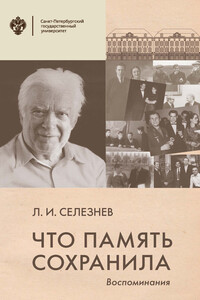
В книге воспоминаний заслуженного деятеля науки РФ, почетного профессора СПбГУ Л. И. Селезнева рассказывается о его довоенном и блокадном детстве, первой любви, дипломатической работе и службе в университете. За кратким повествованием, в котором отражены наиболее яркие страницы личной жизни, ощутимо дыхание целой страны, ее забот при Сталине, Хрущеве, Брежневе… Книга адресована широкому кругу читателей.
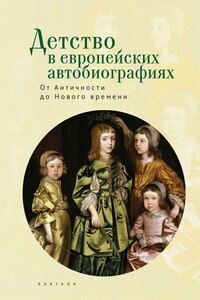
Содержание антологии составляют переводы автобиографических текстов, снабженные комментариями об их авторах. Некоторые из этих авторов хорошо известны читателям (Аврелий Августин, Мишель Монтень, Жан-Жак Руссо), но с большинством из них читатели встретятся впервые. Книга включает также введение, анализирующее «автобиографический поворот» в истории детства, вводные статьи к каждой из частей, рассматривающие особенности рассказов о детстве в разные эпохи, и краткое заключение, в котором отмечается появление принципиально новых представлений о детстве в начале XIX века.
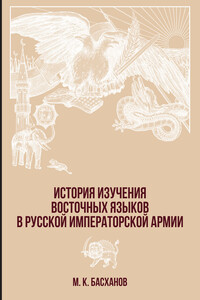
Монография впервые в отечественной и зарубежной историографии представляет в системном и обобщенном виде историю изучения восточных языков в русской императорской армии. В работе на основе широкого круга архивных документов, многие из которых впервые вводятся в научный оборот, рассматриваются вопросы эволюции системы военно-востоковедного образования в России, реконструируется история военно-учебных заведений лингвистического профиля, их учебная и научная деятельность. Значительное место в работе отводится деятельности выпускников военно-востоковедных учебных заведений, их вкладу в развитие в России общего и военного востоковедения.
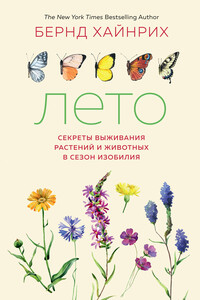
Как цикады выживают при температуре до +46 °С? Знают ли колибри, пускаясь в путь через воды Мексиканского залива, что им предстоит провести в полете без посадки около 17 часов? Почему ветви некоторых деревьев перестают удлиняться к середине июня, хотя впереди еще почти три месяца лета, но лозы и побеги на пнях продолжают интенсивно расти? Известный американский натуралист Бернд Хайнрих описывает сложные механизмы взаимодействия животных и растений с окружающей средой и различные стратегии их поведения в летний период.
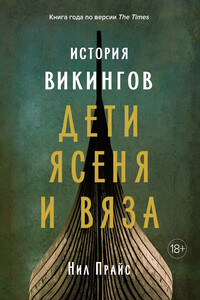
Немногие культуры древности вызывают столько же интереса, как культура викингов. Всего за три столетия, примерно с 750 по 1050 год, народы Скандинавии преобразили северный мир, и последствия этого ощущаются до сих пор. Викинги изменили политическую и культурную карту Европы, придали новую форму торговле, экономике, поселениям и конфликтам, распространив их от Восточного побережья Америки до азиатских степей. Кроме агрессии, набегов и грабежей скандинавы приносили землям, которые открывали, и народам, с которыми сталкивались, новые идеи, технологии, убеждения и обычаи.

«Представляемая мною в 1848 г., на суд читателей, книга начата лет за двадцать пред сим и окончена в 1830 году. В 1835 году, была она процензирована и готовилась к печати, В продолжение столь долгого времени, многие из глав ее напечатаны были в разных журналах и альманахах: в «Литературной Газете» Барона Дельвига, в «Современнике», в «Утренней Заре», и в других литературных сборниках. Самая рукопись читана была многими литераторами. В разных журналах и книгах встречались о ней отзывы частию благосклонные, частию нет…».